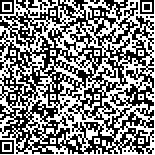下载中心
优秀审稿专家
优秀论文
相关链接
摘要

植被指数已经广泛应用于地表植被覆盖监测,但是地形对植被指数的影响难以避免,却经常在大尺度遥感应用时被忽略。本文利用山区森林的Landsat TM数据计算SR、NDVI、RSR、MNDVI 4种常用植被指数,评估了地形对这些植被指数的影响,并利用余弦校正和C校正模型分别对它们进行地形校正。结果表明,近红外和短波红外比红光波段的地形影响更为敏感,原因是更强的红光天空漫反射削弱了红光的地形影响。地形强烈影响非波段比值型植被指数(如RSR和MNDVI等),导致阳坡的植被指数相对偏小,阴坡的植被指数相对偏大,这种地形效应随坡度增大而显著增大。因此,利用非波段比值型植被指数反演山区植被参数时必须做严格的地形校正。与之相反,波段比值型植被指数(如SR和NDVI等)可以很大程度上消除地形影响,但是在大坡度情况下,地形影响仍然不能被忽略,而且此时SR比NDVI的地形效应更大。C地形校正效果好于余弦校正效果,特别是大坡度情况下更为明显。
Vegetation Indices (VIs) derived from remotely sensed data have been developed to monitor the Earth’s vegetation cover. However, the topographic influence on VIs is an inevitable issue and is usually neglected in their large scale applications. In this study, the topographic effects on four commonly used vegetation indices, including Simple Ratio (SR), Normalized Difference Vegetation Index (NDVI), Reduced Simple Ratio (RSR), and Modified Normalized Difference Vegetation Index (MNDVI), derived from Landsat TM data over a mountainous forest area are evaluated. Two simple methods, the cosine correction and C-correction models, with different treatments of the influence of the diffused irradiance on reflectance, are used to remove the topographic effects on selected VIs. The results indicate that the reflectance in the Near Infrared (NIR) and Short Wave Infrared (SWIR) bands are more sensitive to topographical variations than that in the red band. Diffused radiance from the sky in the red band can moderate the variations of red band reflectance with topography, while this moderation is weak in the NIR and SWIR bands. The topography affects strongly vegetation indices which are not expressed as band ratios, such as RSR and MNDVI, resulting in negative biases on Sun-facing slopes and positive biases on Sun-backing slopes. As the slope increases, these biases increase rapidly. Therefore, the topographic effects should be carefully removed before using these non-band-ratio vegetation indices for vegetation parameter retrieval. Vegetation indices which are expressed as band ratios, such as SR, NDVI, can greatly reduce the noise caused by topographical variations. However, these indices still include significant topographic effects on steep slopes. SR is more sensitive to topographical variations on steep slopes than NDVI. The C-correction model is much better than the cosine correction model in removing topographic effects on VIs, especially on steep slopes.

